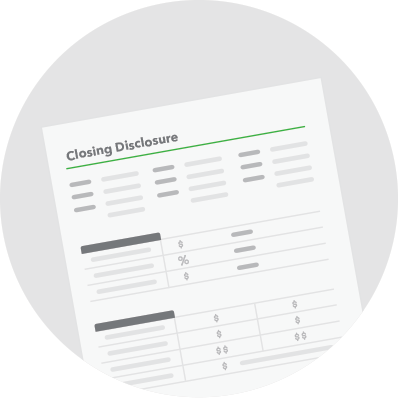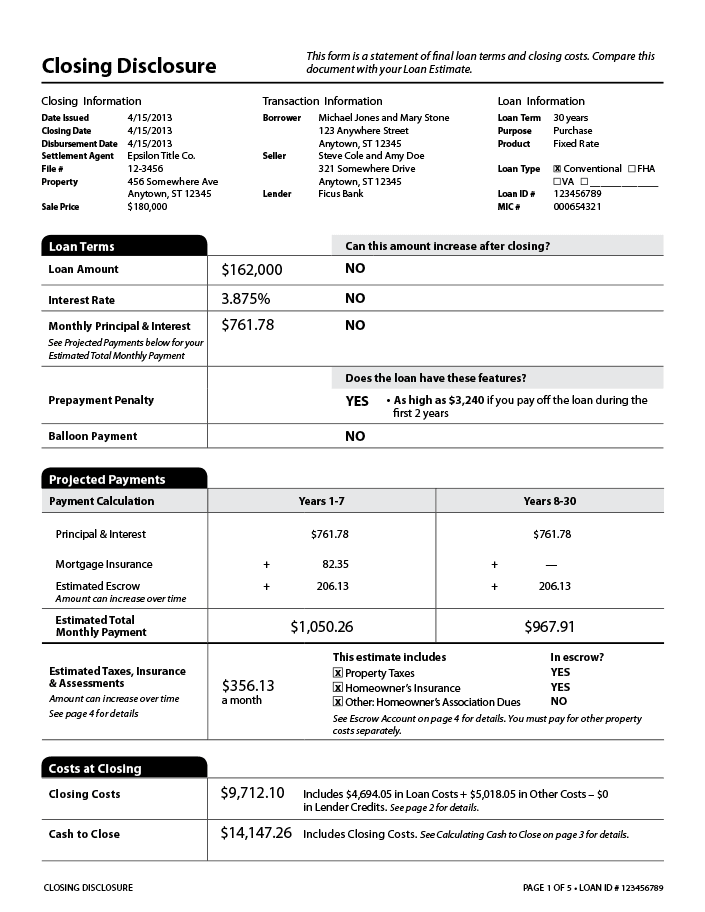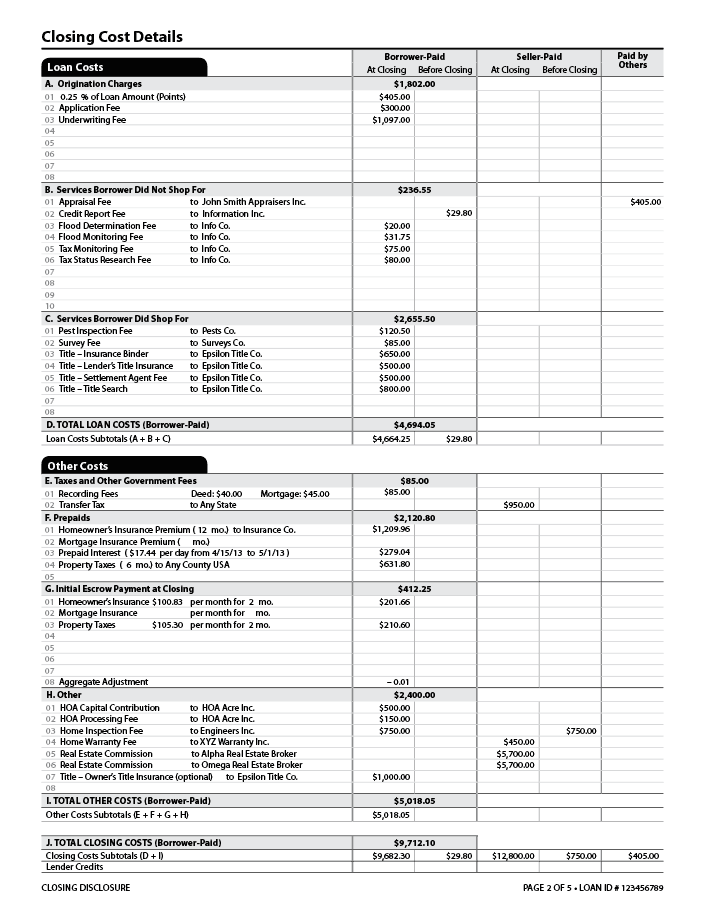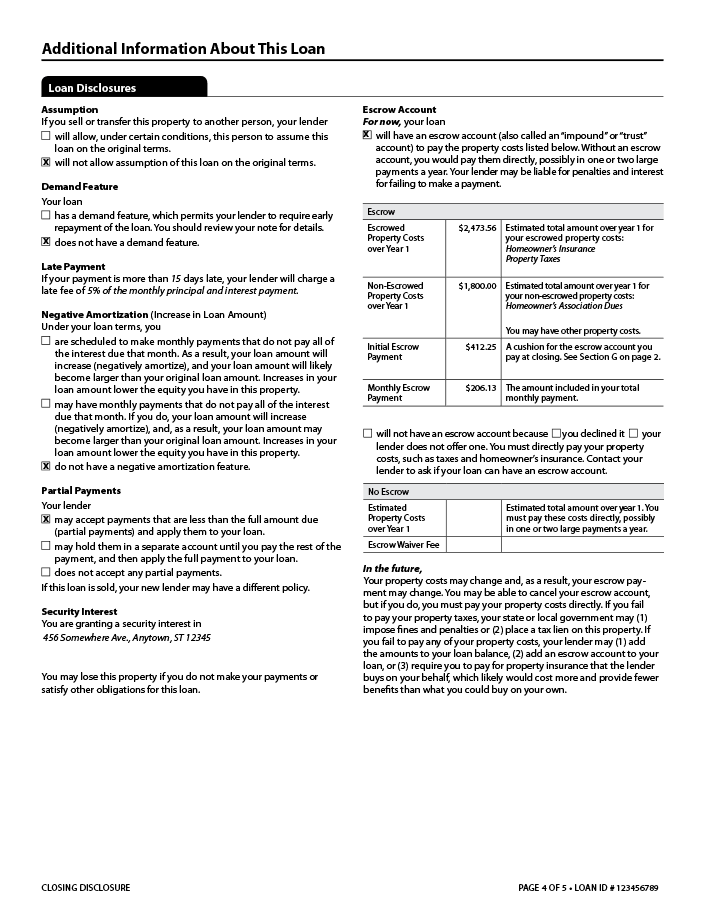Use this tool to double-check that all the details about your loan are correct on your Closing Disclosure. Lenders are required to provide your Closing Disclosure three business days before your scheduled closing. Use these days wisely—now is the time to resolve problems. If something looks different from what you expected, ask why.

 Check the spelling of your name
Check that loan term, purpose, product, and loan type match your most recent Loan Estimate
Check that the loan amount matches your most recent Loan Estimate
Check your interest rate
Monthly Principal & Interest
Does your loan have a prepayment penalty?
Does your loan have a balloon payment?
Prepayment Penalty
Balloon Payment
Principal & Interest
Mortgage Insurance
Estimated Escrow
Estimated Total Monthly Payment
Check that your Estimated Total Monthly Payment matches your most recent Loan Estimate
Check to see if you have items in Estimated Taxes, Insurance & Assessments that are not in escrow
Closing Costs
Cash to Close
Check that your Closing Costs match your most recent Loan Estimate
Check that your Cash to Close matches your most recent Loan Estimate
Check the spelling of your name
Check that loan term, purpose, product, and loan type match your most recent Loan Estimate
Check that the loan amount matches your most recent Loan Estimate
Check your interest rate
Monthly Principal & Interest
Does your loan have a prepayment penalty?
Does your loan have a balloon payment?
Prepayment Penalty
Balloon Payment
Principal & Interest
Mortgage Insurance
Estimated Escrow
Estimated Total Monthly Payment
Check that your Estimated Total Monthly Payment matches your most recent Loan Estimate
Check to see if you have items in Estimated Taxes, Insurance & Assessments that are not in escrow
Closing Costs
Cash to Close
Check that your Closing Costs match your most recent Loan Estimate
Check that your Cash to Close matches your most recent Loan Estimate
 Borrower-Paid
Origination Charges
Points
Check that “Services Borrower Did Not Shop For” are similar to what was shown on your Loan Estimate
Check that prices in “Services Borrower Did Shop For” match what you agreed to pay
Taxes and Other Government Fees
Prepaids
Initial Escrow Payment at Closing
Other Costs
Total Closing Costs
Lender Credits
Borrower-Paid
Origination Charges
Points
Check that “Services Borrower Did Not Shop For” are similar to what was shown on your Loan Estimate
Check that prices in “Services Borrower Did Shop For” match what you agreed to pay
Taxes and Other Government Fees
Prepaids
Initial Escrow Payment at Closing
Other Costs
Total Closing Costs
Lender Credits
 How much will it cost if you make a late payment?
Will your lender accept partial monthly mortgage payments?
Will you have an escrow account?
If you do not have an escrow account, are you paying an escrow waiver fee to the lender?
Assumption
Demand Feature
Negative Amortization
Security Interest
Escrow Account
How much will it cost if you make a late payment?
Will your lender accept partial monthly mortgage payments?
Will you have an escrow account?
If you do not have an escrow account, are you paying an escrow waiver fee to the lender?
Assumption
Demand Feature
Negative Amortization
Security Interest
Escrow Account